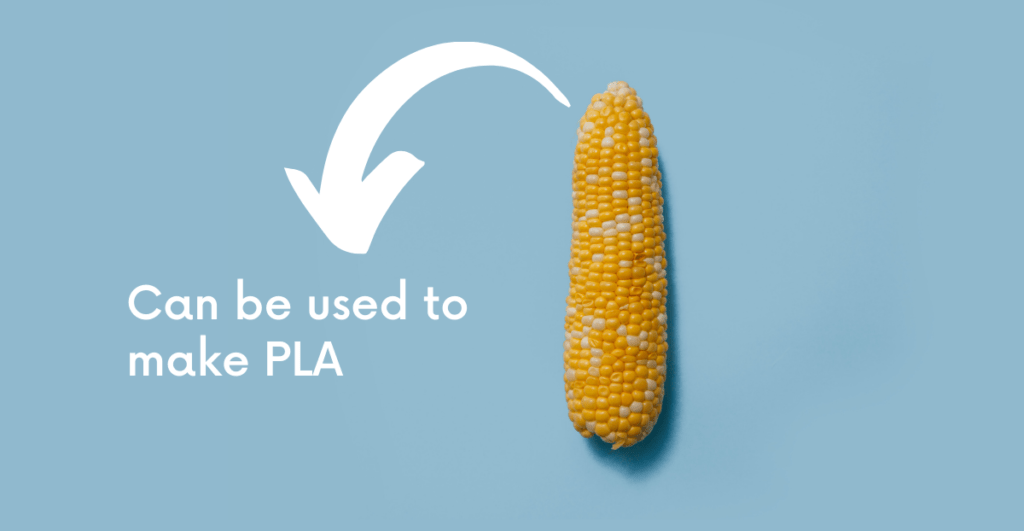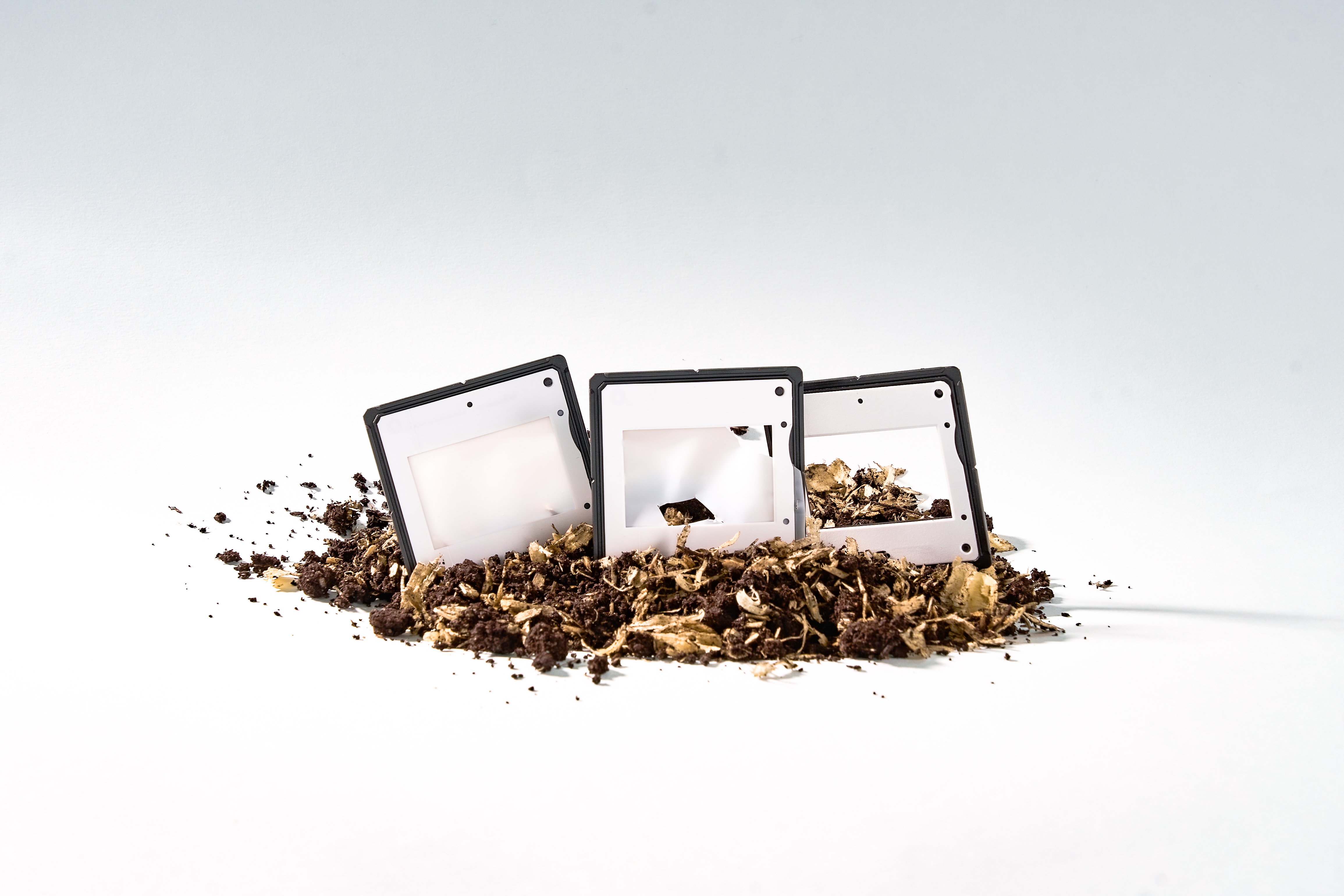What is PLA?
100% biosourced and biodegradable, PLA is one of the first renewable plastics capable of competing with conventional plastics in terms of both performance and environmental impact! Emitting three times less CO2 and already available on the market, PLA could well contribute to reconciling plastics with the planet. Find out everything you need to know about this bioplastic!
Polylactic Acid for connoisseurs

The abbreviation PLA stands for the English term “Polylactic Acid”.
Chemist Théophile-Jules Pelouze first synthesized this polymer in 1845. Subsequently, an industrial synthesis process was patented by the DuPont chemical company in 1954. To delve deeper into the history of plastics, explore 15 key dates.
In the 1960s and 1970s, this polymer found application in the biomedical field due to its ability to degrade under physiological conditions. Owing to its non-toxic nature and biocompatibility with humans, bioresorbable sutures were commonly made from PLA, along with continuous-release drug implants.
It was during the 1990s that PLA expanded into new applications. Using the ROP (ring-opening polymerization) process, Cargill successfully synthesized a high-molecular-weight PLA on an industrial scale: PLLA, available in pellet form. Its mechanical properties and biodegradability make it a suitable replacement for non-biodegradable polymers such as PET and polystyrene.
Since then, ongoing research has yielded numerous results, allowing the design of formulations tailored to specific applications and the production of increasingly refined PLA products.
PLA: a biosourced and biodegradable bioplastic!
PLA is a bioplastic with the distinct advantage of being both biosourced and biodegradable. Typically, biobased plastics are either one or the other, but seldom both.
Classified as a 100% biobased plastic, PLA is derived from renewable resources such as maize or sugar cane. The fermentation of starch or sugar, extracted from these same renewable resources, results in the production of lactic acid. This lactic acid is then transformed into a monomer: lactide. The polymerization of lactide is what allows the manufacturing of PLA.
Additionally, PLA is biodegradable, thanks to its compostability. However, its compostability has historically been limited due to the requirement for high and constant temperatures, restricting its usage to industrial installations. Furthermore, its extended disintegration time meant that it was previously only suitable for producing relatively thin films with a limited quantity of PLA (and consequently, biobased material). This challenge has now been addressed through the incorporation of CARBIOS Active®, the first encapsulated enzyme, facilitating plastics with a high PLA content to achieve OK compost HOME certification from Tüv Austria. By facilitating and accelerating the assimilation of PLA by compost micro-organisms, this technology enables plastic packaging and products, even rigid ones, to be seamlessly integrated into the collection process alongside peelings and other bio-waste.
A flourishing field of application!
With CARBIOS Active, PLA resins can be continuously manufactured without requiring major adjustments to the existing tools of the plastics industry—a significant advantage that encourages the widespread adoption of PLA throughout the sector.
PLA stands out from other compostable and biobased resins currently on the market due to its transparency and rigidity at ambient temperature. This polyester is characterized by clarity and brilliance comparable to glass, excellent printability, resistance to grease, and to numerous organic compounds and solvents. Additionally, it possesses intermediate barrier properties similar to those of polystyrene. PLA can thus be a viable alternative to products derived from fossil resources in many applications.
However, its applications are diversifying into various areas such as:
- Home (floor and wall coverings, curtains, protective covers, textiles, bin bags, hoover bags, toys, household appliances, wipes, nappies),
- Electronics (protection for smartphones, computers),
- Hygiene (wipes, nappies),
- Agriculture (pots, film, string, clips),
- Automotive (dashboards, trim),
- Industry (polybags, blister packs, cushioning bubbles)
In a short period, PLA has also become the most widely used filament for 3D printing, thanks to its biodegradable nature, aligning perfectly with the trend toward three-dimensional printing (production of the bare minimum, on demand, relocated). Moreover, filaments for 3D printing are generally made from this plastic due to its highly suitable thermal and mechanical properties.
PLA is the future !
Driven by strong demand, the bioplastics market is growing rapidly: global bioplastics production capacity is expected to increase from around 2.2 Mt in 2022 to approximately 6.3 Mt in 2027 (European Bioplastics nova-institute, 2022). The good news is that this growth will not compete with food or feed. 100% biosourced and biodegradable, PLA is among the first renewable polymers capable of competing with conventional polymers in terms of performance and environmental impact. Hence, its production has been steadily increasing since 2001.
Presently, regulations concerning biodegradable plastics are highly favorable in Asia and North America. The United States, in particular, is experiencing significant momentum, with an increasing number of states implementing measures to support the development of bioplastics. Major brands are also showing growing interest in this innovative technology and are participating in consortia.
The situation is more complex in Europe, with disparities between countries. For instance, France is facing substantial obstacles, whereas the situation is very favorable in Italy, where industrial composting practices are well-established. However, the PPWR (Packaging and Packaging Waste Regulation) lists plastic bags for fruit and vegetables, tea bags, and coffee capsules as compostable packaging that can be collected along with bio-waste. This positive development indicates that the sector is organizing itself in Europe.
Italy serves as a good example to follow. In France, there are currently 750 operational composting platforms.
An effective solution to fight against pollution from useful plastic
Laboratory slides of PLA enzymed in compost ©SkotchProd
Plastics are extensively utilized in various industries, playing a crucial role in meeting hygiene standards, providing protection against contamination, and averting the wastage of substantial amounts of food. By inhibiting the proliferation of bacteria, plastic packaging contributes to prolonging the shelf life of food.
Moreover, as an economical and lightweight product, plastic packaging facilitates the transportation of goods, with lower energy consumption and greenhouse gas emissions compared to those associated with glass or aluminum packaging.
It is for these reasons that global plastic production continues to grow year on year. Therefore, it is crucial to consider future solutions that will allow these products to have an environmentally friendly end-of-life.
Among these solutions, recycling must be prioritized. However, plastics that are soiled, too thin, etc., cannot always be recycled. Biodegradation, therefore, appears to be a practical solution that complements recycling.
These articles may interest you
As plastic pollution has emerged as a significant societal concern, numerous international organizations, including governments, unions, industries, research centers, certification and standardization bodies, and others, are actively engaged in developing and adopting new materials, such as biodegradable and compostable polymers.
At the national level, legislation is being enacted to establish dedicated composting systems, with the objective of reducing the use of conventional plastics in single-use products and non-recyclable plastics. These efforts are manifested through standards and labels affixed to products, serving as evidence of their compliance.
Biodegradable bio-based plastics are emerging as a complementary solution to recycling in the fight against pollution. However, in a period where land and water are also becoming critical concerns on a global scale, what impact will the development of biosourced plastics production have on our farmland?
100% biosourced and biodegradable, PLA is one of the first renewable plastics capable of competing with conventional plastics in terms of both performance and environmental impact! Emitting three times less CO2 and already available on the market, PLA could well contribute to reconciling plastics with the planet. Find out everything you need to know about this bioplastic!

